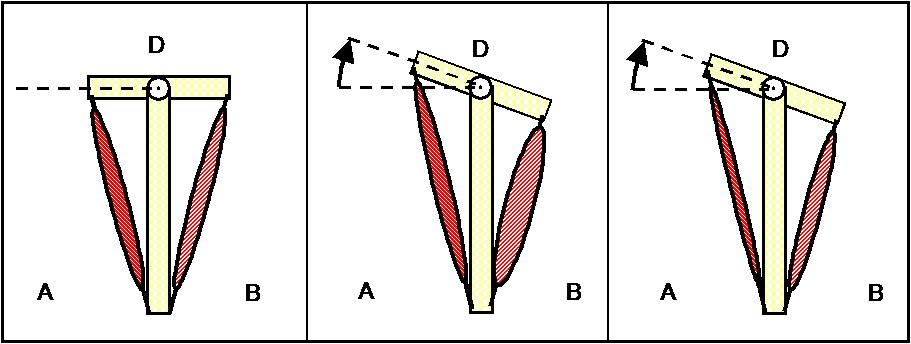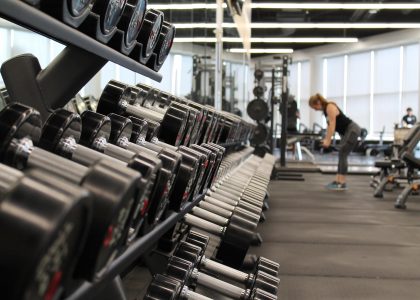Muscular imbalance?
An important topic when it comes to properly managing your training.
The counterpart – i.e. structural balance – is also extremely valuable for a healthy, high-performance body.
Never heard of it?
Then it’s about time.
Let’s get started!
Structural balance – the basics
Let’s first take a little excursion into the subject of nutrition.
There I can best explain the concept of structural balance to you.
Imagine that you eat the way I propose in my really fit forever principles: The basis of your diet are natural foods, mainly of vegetable origin. You also get enough carbohydrates, fats and proteins and cover your need for vital substances such as vitamins, minerals and trace elements. In addition, you are well supplied with water and do not impose any absolute bans on yourself, but you can also enjoy, treat yourself to something.
In that case, you would probably say that you are eating a balanced diet.
And there we come back to your body and what structural balance means in this context.
It’s all about one catchphrase: Balance !
In relation to your body, this means:
- Good interaction between agonists and antagonists over the entire body
- Thinking in movement patterns and adapting the training plan accordingly
- Make use of the range of motion of the joints – movements in FROM (full range of motion)
If you do not pay attention to training your body in a balanced way, you can quickly think of a muscular imbalance that endangers your training success and in the long term even your health.
But of course not only the training is a factor that causes a muscular imbalance
What is a muscular imbalance?
To define the muscular imbalance, I borrowed the next paragraph from Wikipedia, they defined it very well:
“ Muscular imbalances (imbalance) means increased muscle shortening and / or muscle weakening between agonist (= player) and antagonist (= opponent) due to one-sided strength development while neglecting their ability to stretch. They are caused by insufficient or absent physical exertion, one-sided stress during sport or in everyday life, insufficient regeneration, incorrect movement, but also injuries to the musculoskeletal system. ”
Graphically the whole thing looks like this (schematic).

In the left picture you can see schematically how two muscles – agonist and antagonist – are in balance at a joint and so exert the same force. The middle picture shows you a joint in which a muscular imbalance has arisen due to overuse of muscle B. In the third example, muscle A has adapted to a low tension and weakened – this can also disturb the structural balance.
How does a muscular imbalance occur
When it comes to a muscular imbalance, one thing to remember is particularly important:
Form follows function!
This quote originally comes from architecture. But it is also correct in relation to your body. In reality it is nothing more than a biological total work of art.
What does that mean exactly?
Well, it’s very simple: Your body adapts to what you do with it every day.
In the muscular imbalance category, this means that your muscles have a tendency to shorten when they are overused. Not literally, but the tension and tone change in such a way that there is always a greater pull at the insertion of the muscle than should normally arise at rest.
A classic here is a shortened chest muscle, which then begins, slowly but surely, due to frequent beach muscle training – you know, in the gym you pump what it takes from muscles that the other person sees when you see it pulling your shoulders forward and giving you a fine hunched back. Structurally balanced training protects you from this because it opposes this horizontal upper body pressure exercise with a horizontal upper body pull exercise.
Even if certain symptoms of a muscular imbalance are already visible – i.e. already affecting the structure – you can still do a lot with structurally balanced training – in this case with a focus on strengthening the opponent – and a proper stretching and mobility program do a lot and straighten yourself up again.
In the following video by the ingenious YouTuber “Strong & Flex” you will get a lot more information about muscular imbalance, especially regarding left-right imbalances.
Let’s now take a closer look at these points in order to be able to assess what they mean for your training if you strive for structural balance – and thus the avoidance of muscular imbalances.
The interaction of agonists and antagonists
Briefly explained: Every muscle needs an opponent so that it can return to its original position. If we had no muscular opponent (= antagonist), we would be dependent on gravity or other external forces, not a really edifying thought.
If you only train one muscle at a time, but never its opponent, this can lead to a muscular imbalance.
The first point you should consider in your training plan is therefore a good ratio between agonists and antagonists, especially when it comes to the large muscle groups in the arms and legs.
If, for example, you make the mistake and focus only on the much-cited beach muscles (chest, biceps, stomach), you neglect the respective antagonists, especially the back.
So make sure that you train your muscles holistically, like with one of my full body training plans.
Thinking in terms of movement patterns
Now you already know that you shouldn’t focus on individual muscles, but always keep an eye on your opponent during training.
You can expand this knowledge with the movement patterns and thus make your training really complete.
From Mark Lauren’s good book Fit without Devices * – which was one of my first readings on the subject of bodyweight training – I have also used the division into the following main categories of exercises for my training plans:
- Upper body press
- Upper body pull
- lower body
- Core
The book is also highly recommended for getting started because you can get to know many different training methods there.
This division can be expanded a bit and then depicts the 8 movement patterns that we should focus on during training:
- Upper body press horizontally
- Upper body drag horizontally
- Lower body knee-oriented
- Lower body hip-oriented
- Upper body press vertically
- Upper body press horizontally
- Core linear
- Core sideways / rotating
Let’s briefly feed this with a few examples.
You can press horizontally, for example, with push-ups, pull horizontally with inverted rows, press vertically with pikes or handstand push-ups, pull vertically with pull-ups.
You challenge the lower body in a knee-oriented manner with squats and progression levels – such as pistol squats – and hip-oriented, for example with the butt lift or hip thrust.
As far as the core is concerned, you can challenge it linearly, for example with leg raises or planks, rotating or sideways, ideally with rotational movements in the trunk.
In the 2nd edition of my P.A.T. Bodyweight Training Complete Package I already cover 7 of these movement patterns – the 8th will come with the next update . The price will then increase again, so it’s best to grab it now and save (you get the update for free).
USE AND EXTEND FROM
FROM means Full Range of Motion, i.e. full range of motion.
This term is applied to the working joint or joints. Your goal should be to get every exercise you do with the full range of motion that is available to you. The abbreviation AROM is even better – that stands for Active Range Of Motion – i.e. the active, complete range of motion that can be achieved in the joint (you can currently do it)
Explained using the push-ups as an example, this means using the full range of motion by going down to the floor and pushing yourself out of your shoulders while pushing up. This is how you counteract a muscular imbalance. You can expand your ROM, for example, if you put your hands on parallettes and come down even further.
This way you run much less risk of a muscular imbalance developing.
The only point at which you can cheat is when you are training on a new skill and you are not yet strong enough to perform the movement as a whole. Let’s say you want to learn a pistol squat, you can get down well, but as soon as you go down too far, you won’t get up again.
In that case, it also helps to train these half reps to get stronger.
Assisted variants with e.g. Straps so that you can walk through the entire range of motion with support.
By performing the exercises in FROM, you can ultimately expand it. Nevertheless, additional mobility training is always recommended as a kind of joint hygiene.
Conclusion
It is best not to let muscular imbalances develop at all.
Your training plan should therefore take into account that it includes as many movement patterns as possible – preferably all within one training week.
You can then make adjustments to your everyday workload yourself: For people who sit a lot at the desk, increased training of the horizontal pull and the rotating core, for example, is a relief for the spine and helps against complaints from long sitting at the Writing desk. Hm, that would be a good idea for the next update of my e-book – a training plan especially for people who sit at their desks a lot …
I can also recommend a good book on the subject of training with structural balance. There you will find lots of exercises and you will understand how the muscles work together.







